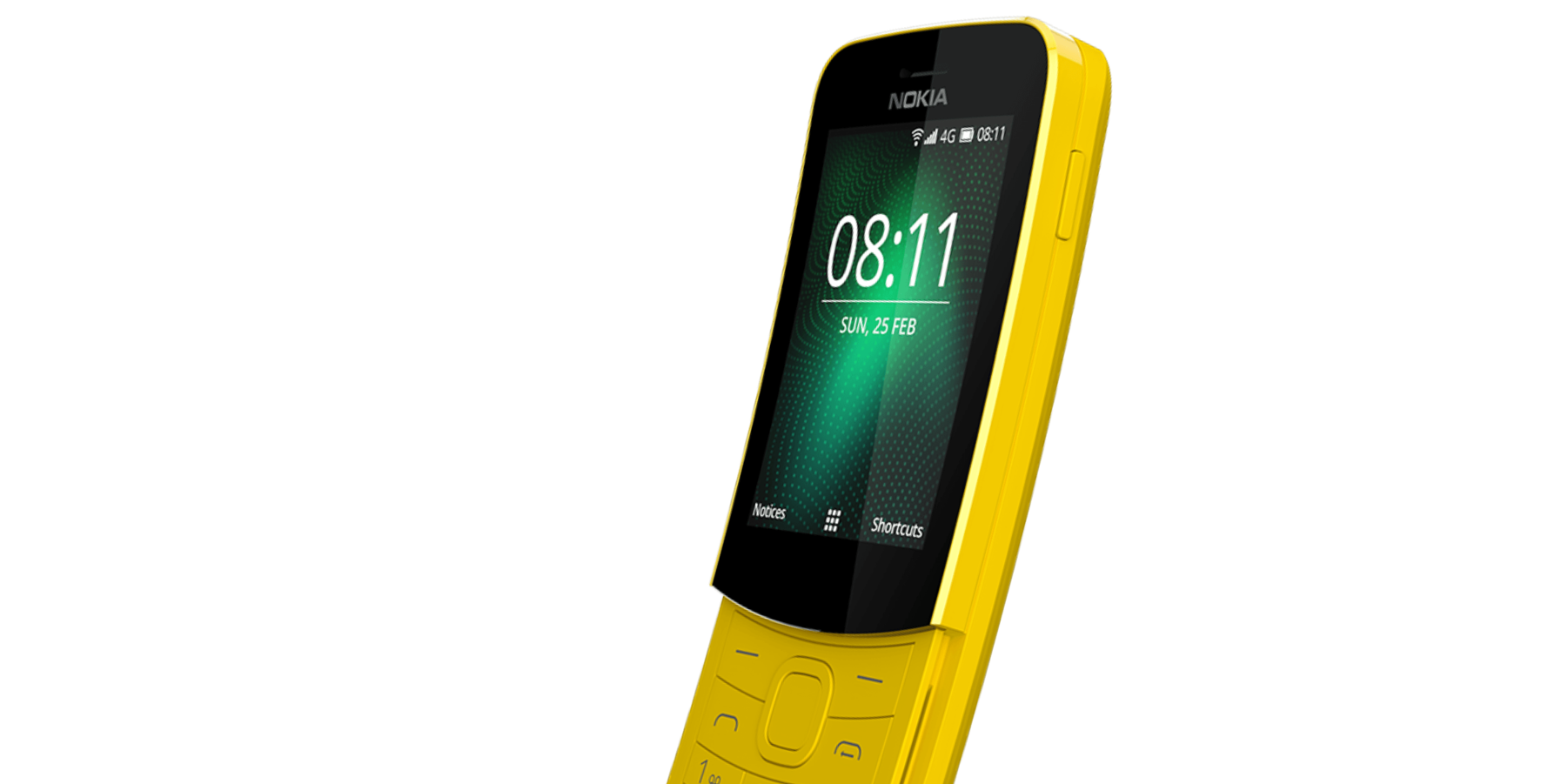The smartphone industry has been stagnant and lacking innovation for a good few years. With each new iteration, we witness handsets becoming thinner, faster, and lighter yet somehow bigger than before. The latter is due to screen bezels shrinking in size with very minimal to no borders around the edges.
Stand-out moments in recent years have been Samsung’s curved “infinity display” introduced on the S8, and Apple’s face-mapping feature on the iPhone X that projects 30,000 invisible dots on to your face.
For the most part, there has not been anything revolutionary, but we’re still holding out for a breakthrough in battery technology.

Nokia’s revived 8110 slider phone. Photo supplied.
At Mobile World Congress (MWC) 2018, the largest mobile event of the year held in Barcelona in February, we saw announcements from several big mobile players, while some opted not to unveil anything, others simply refreshed existing devices.
Loading...
READ: Understanding the real innovation behind the iPhone
Additionally, Formula 1 made its first-ever appearance at MWC to launch a live stream ad-free grand prix subscription service, and Spanish football league La Liga showed off new broadcast technologies like its cutting-edge 4K HDR broadcasts, a skycam for drone-like footage, professional analysis of the game during the game, and physical and tactical reports.
Meanwhile, Ford made Google’s popular live traffic, community-based app Waze available on its SYNC 3 infotainment platform globally from April. Another motor manufacturer, Land Rover, unveiled its first-ever smartphone, the Explore. The Android device is developed by the Bullitt Group and has durable features like handling extreme temperatures, surviving 1.8m drops and being underwater – including salt water, with a massive battery.
Google introduced a light version of its mobile operating system Android Oreo Go Edition at the end of last year, and at MWC 2018, we got to see these entry-level devices running it for the first time. It is created for phones with 1GB of RAM or less with minimal storage, processing power so performance won’t take a hit, and for limited connectivity, as in the African market. The six devices powered by Android Oreo Go Edition initially will be the Nokia 1, Alcatel 1X, ZTE Tempo Go, Lava Z50, Micromax Bharat Go, and GM 8 Go.
On the premium smartphone side, Samsung’s new S9 and S9+ flagships put focus on both the consumer and business user. The new camera has variable aperture, a mobile smartphone first. Regular smartphones have fixed aperture, but the S9 and S9+ have dual aperture that switches mechanically between F1.5 for low-light photography and F2.4 for bright, outdoor shots. It also shoots 960 frames-per-second slow motion video; and introduces AR Emoji, augmented reality based emoji similar to Snapchat’s Bitmojis. Business users get the Enterprise Edition software straight out of the box, a paid for service tailored to businesses. Powerful features include disabling of the camera, SD card or screenshots while at workplace, preventing sensitive information from leaking.
Sony’s XZ2 and XZ2 Compact devices come six months after its previous-generation flagships with a major physical change – new round edges (gone are the signature blocks). Both handsets do 4K HDR recording, a smartphone first, and following suit from Apple, the headphone jack has been removed. The front-camera takes 3D selfies, and rear does 960fps slow-motion videos, introduced last year. Wireless charging is available on the larger device, and the Compact is anything but, at 5-inches.
READ MORE: Is There A Future In Cellphones?
Nokia once again played the nostalgia card and revived the 8110 slider phone in an eye-catching bright yellow color, dubbed the ‘banana phone’. It has 4G support, runs on a new platform called KaiOS so apps will be made especially for it, with WhatsApp, Twitter and Facebook announced. Nokia brought out four other handsets in addition to the 8110 4G: a flagship Nokia 8 Sirocco; a mid-range Nokia 7+, an updated Nokia 6, and entry-level Nokia 1.
Once again, MWC felt like an incremental update with some great new features thrown in here and there. In the age of instant gratification, it’s getting increasingly difficult for long-term excitement.
– By Nafisa Akabor
Loading...
